Joints
The maximum contraction joint spacing shall be not more than 24 times the slab thickness or
4.5 m (15 ft), whichever is smaller.
Rationale: This limit is set not only to control out-of-joint cracking, but also to minimize curling. If the slab edges curl, the polishing will expose more coarse aggregate at the corners (Figure 4). The contraction joint spacing can be adjusted based on concrete properties, environmental conditions, and materials. The engineer should determine the maximum contraction joint spacing to minimize both cracking and curling. Rather than provide the maximum contraction joint spacing (Figure 5), the preferred specification offers the contraction joint layout to incorporate the joints as desired in the polished concrete.
Form contraction joints with an early-entry power saw using a dry-cut blade. Use a vacuum attached to the saw to remove saw cut residue.
Rationale: The early-entry saw minimizes out-of-joint cracking due to delayed sawing, but the residue must be removed or it will stain the concrete at the joint (Figure 6) and show through the polished surface.
Curing
Cure concrete by one or a combination of
the following methods: (1) Moisture Curing,
(2) Moisture-Retaining-Cover Curing, or (3) Resin Curing Compound.
Rationale: It is very difficult to specify a generic format for a generic project due to the interaction of the curing method and the potential use of dyes, stains, and hardeners for the polished slab. This needs to be resolved at the preinstallation conference with the final selection of the curing method based on the preference of the polishing contractor and the products to be utilized for the polished concrete.
Protection
Protect the concrete slab in accordance with the slab protection provisions in section 03 35 43–Polished Concrete.
Rationale: There are no provisions in 03 30 00 for slab protection. The Concrete Polishing Association of America (CPAA) recommends the approach specified above. As this involves the activities of other trades, the protection falls to the construction manager who must be made aware of the importance of protection. Figure 7 shows a jobsite sign that helps convey the importance of protecting the slab surface to all trades. Alternatively, the slab could be specified to be placed late in the schedule so there are minimal protection issues. Although this will slightly increase the cost and schedule, it may be the best approach as it is very difficult to protect the slab during construction.
Identifying the differences: Part 3 and Part 2–Products
While it is imperative to specify the correct methods to ensure the concrete is polished correctly, it is also important to choose the right products. One should use the following materials and terminology to achieve the desired polished concrete goals.
Vapor retarder
Sheet vapor retarder: ASTM E 1745, Standard Specification for Plastic Water Vapor Retarders Used in Contact with Soil or Granular Fill Under Concrete Slabs, Class A. Include manufacturer’s recommended adhesive or pressure-sensitive tape.
Rationale: Moisture can affect the polished concrete surface.



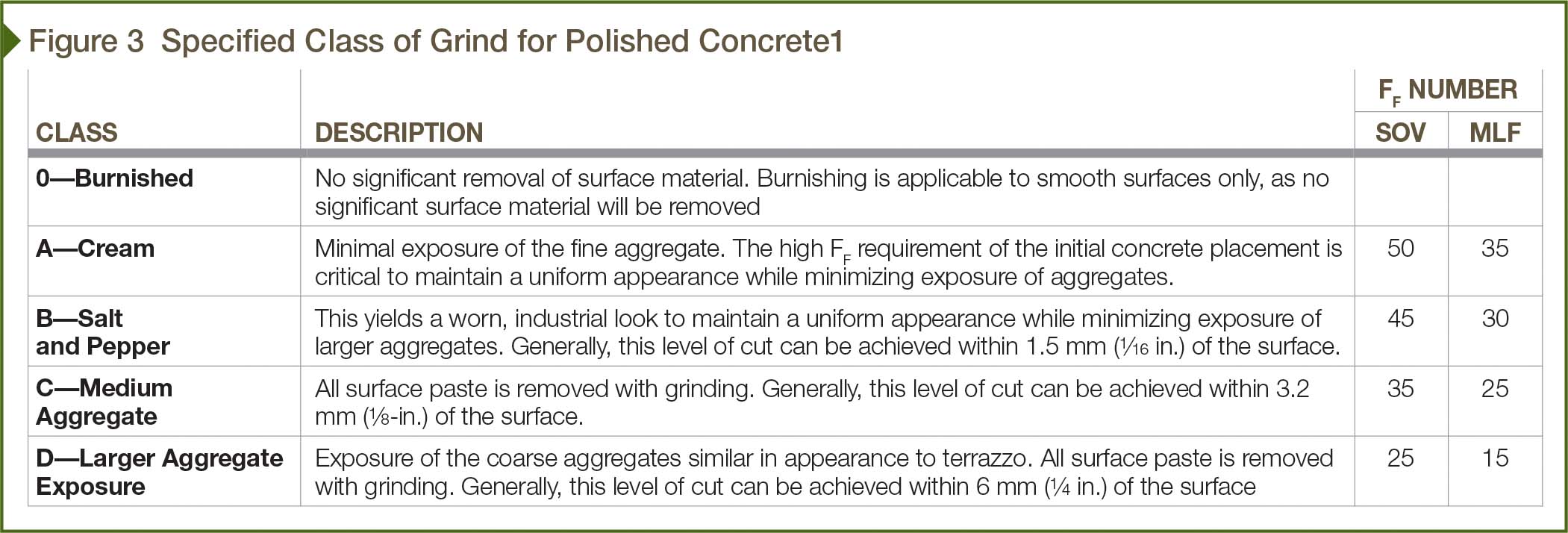
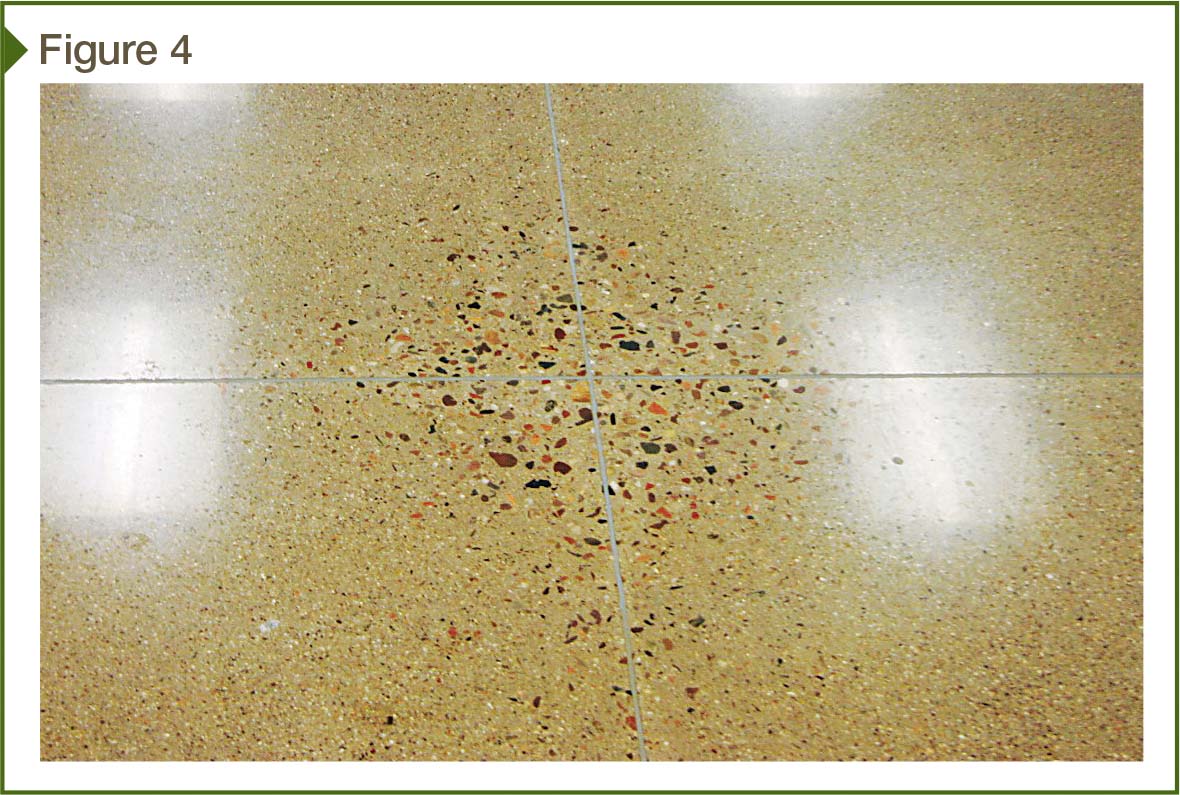
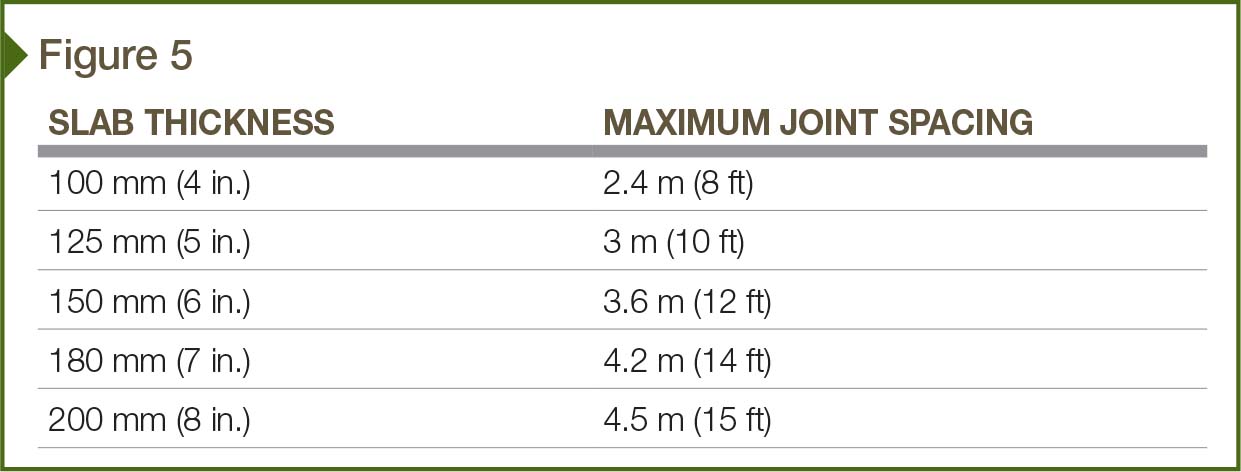
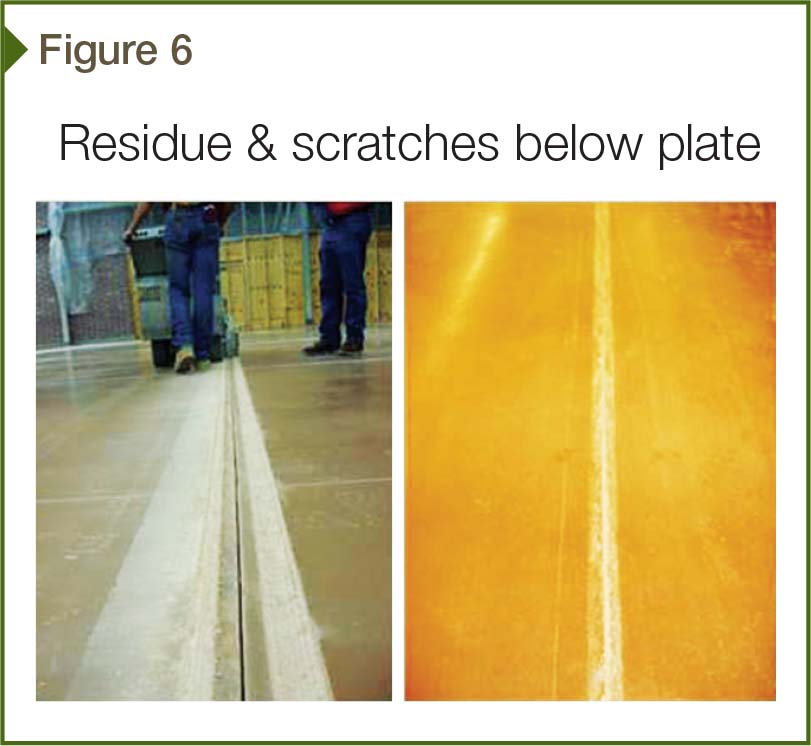
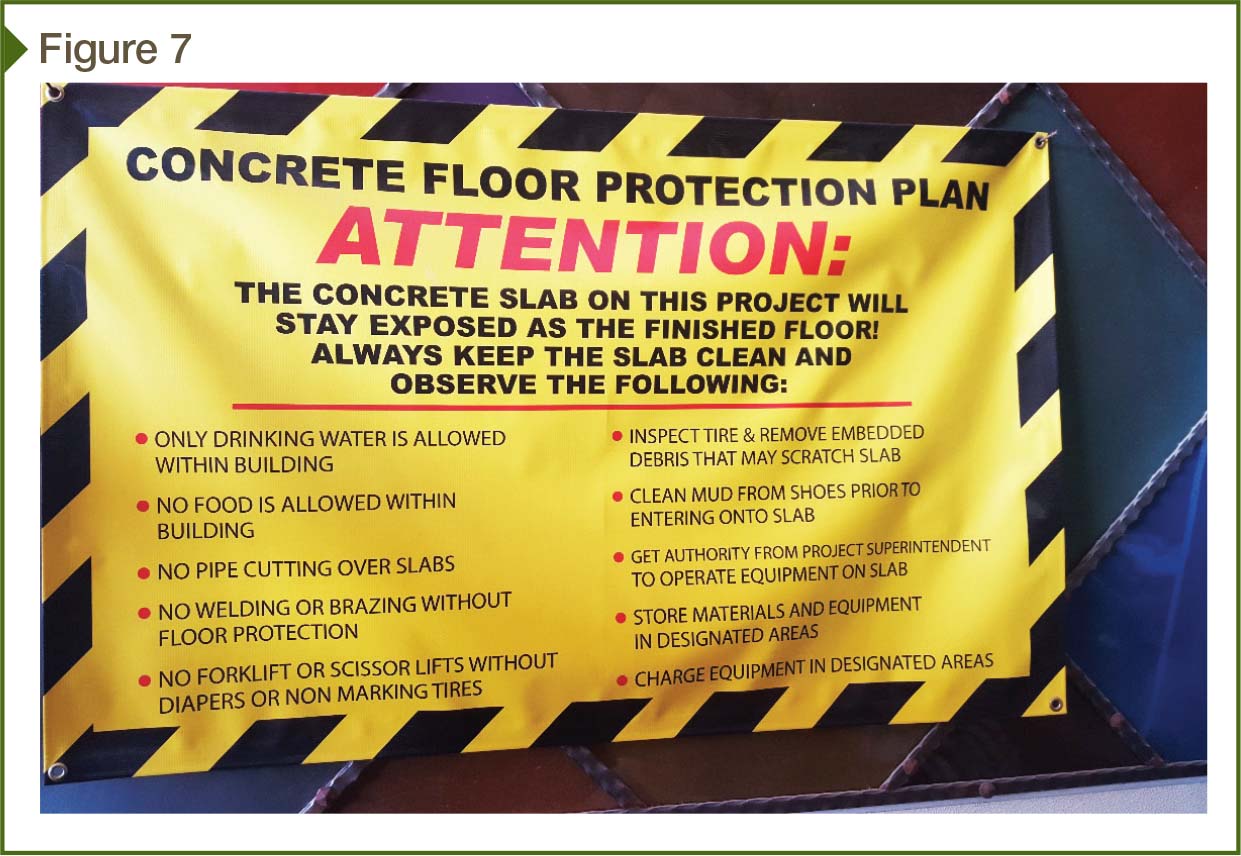
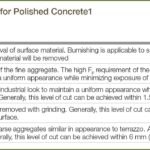
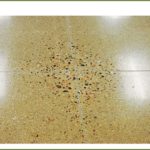

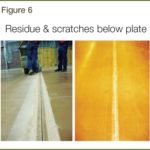
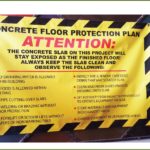


WOW! You guys really put some quality thought into this! I really appreciate the fact that is was designed to be viewed on a monitor with slides and the fact that you included the very rare WHYS!!!
Great article. Out here in Seattle we are using 22%-30% slag cement. How did you arrive at the recommendation for 20% maximum? -David Landrey, CSI, ACI, LEED AP
Please do this for slabs to receive resilient flooring & the inherent issue of ASTM F710 & spray on curing compounds / moisture sealer spray on products. So many spec writers seem to write a ‘belt & suspenders’ approach when doing both just creates a situation where the belt doesn’t warrant the suspenders’ performance and vice-versa.
Great Read, I love concrete Polishing, we just started doing more and more of those these days.
We keep getting scratches in slag mixes.
There are many light colored scratches that require additional cutting to remove
Many of our mixes are 40% slag.
Has anyone had this experience with slag mixes.